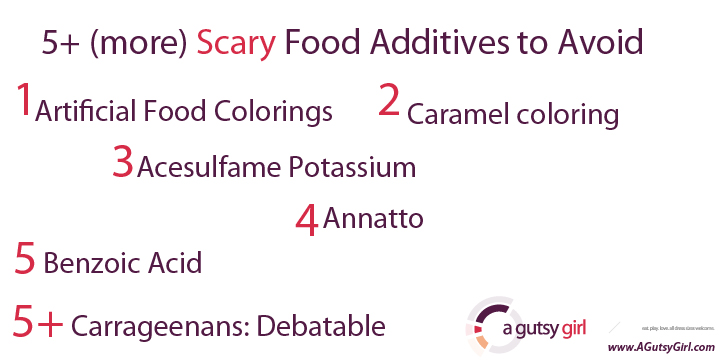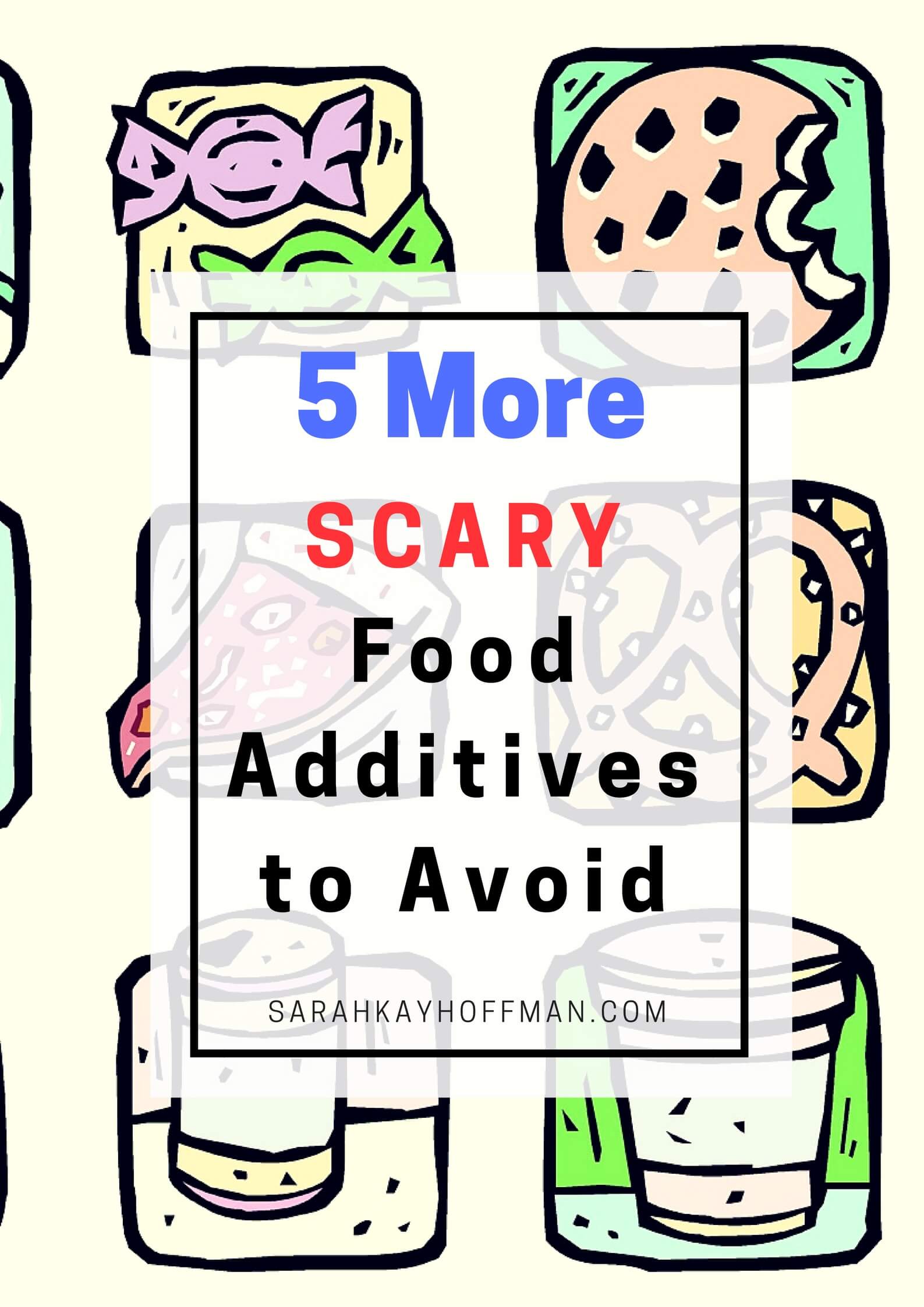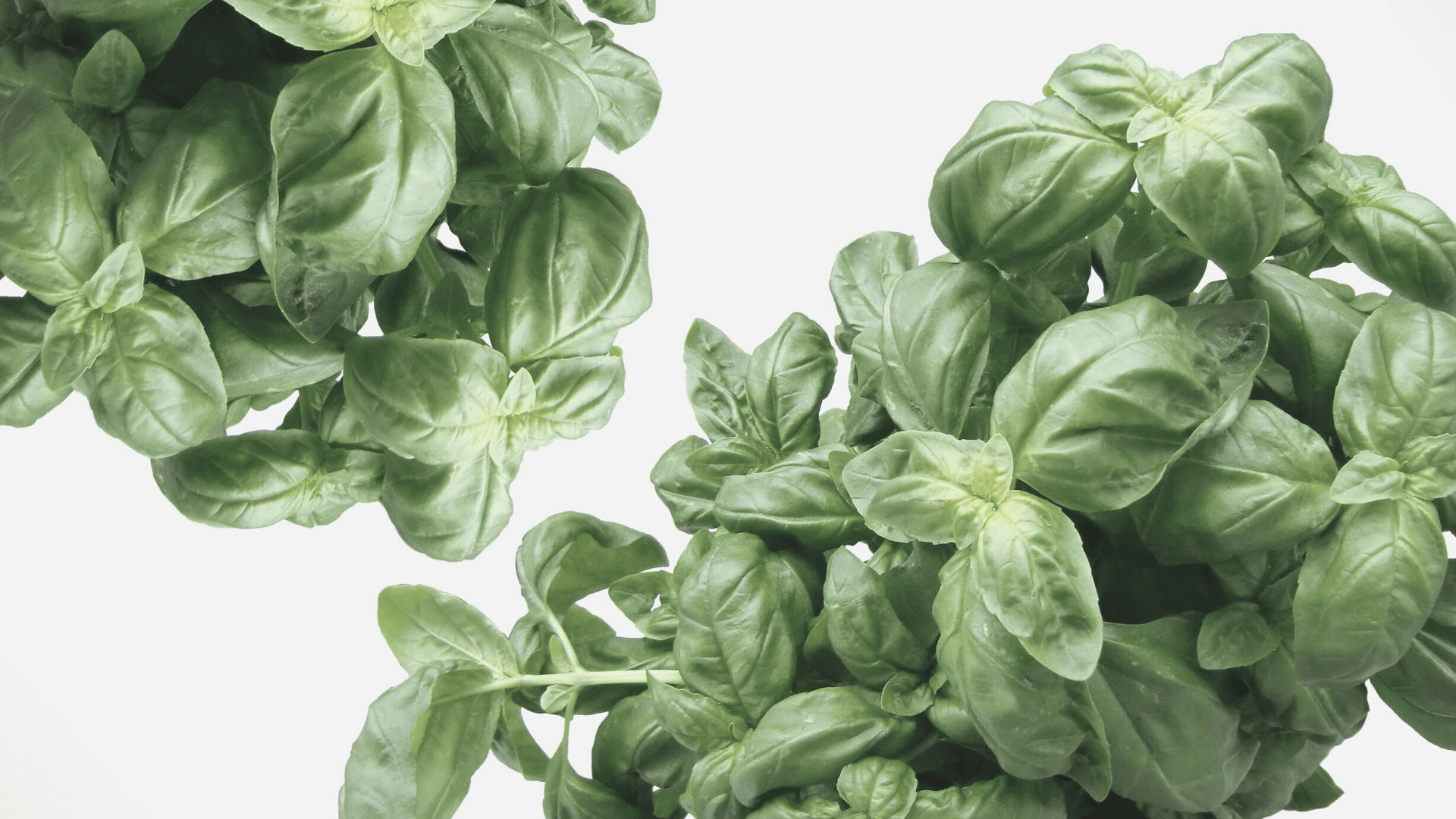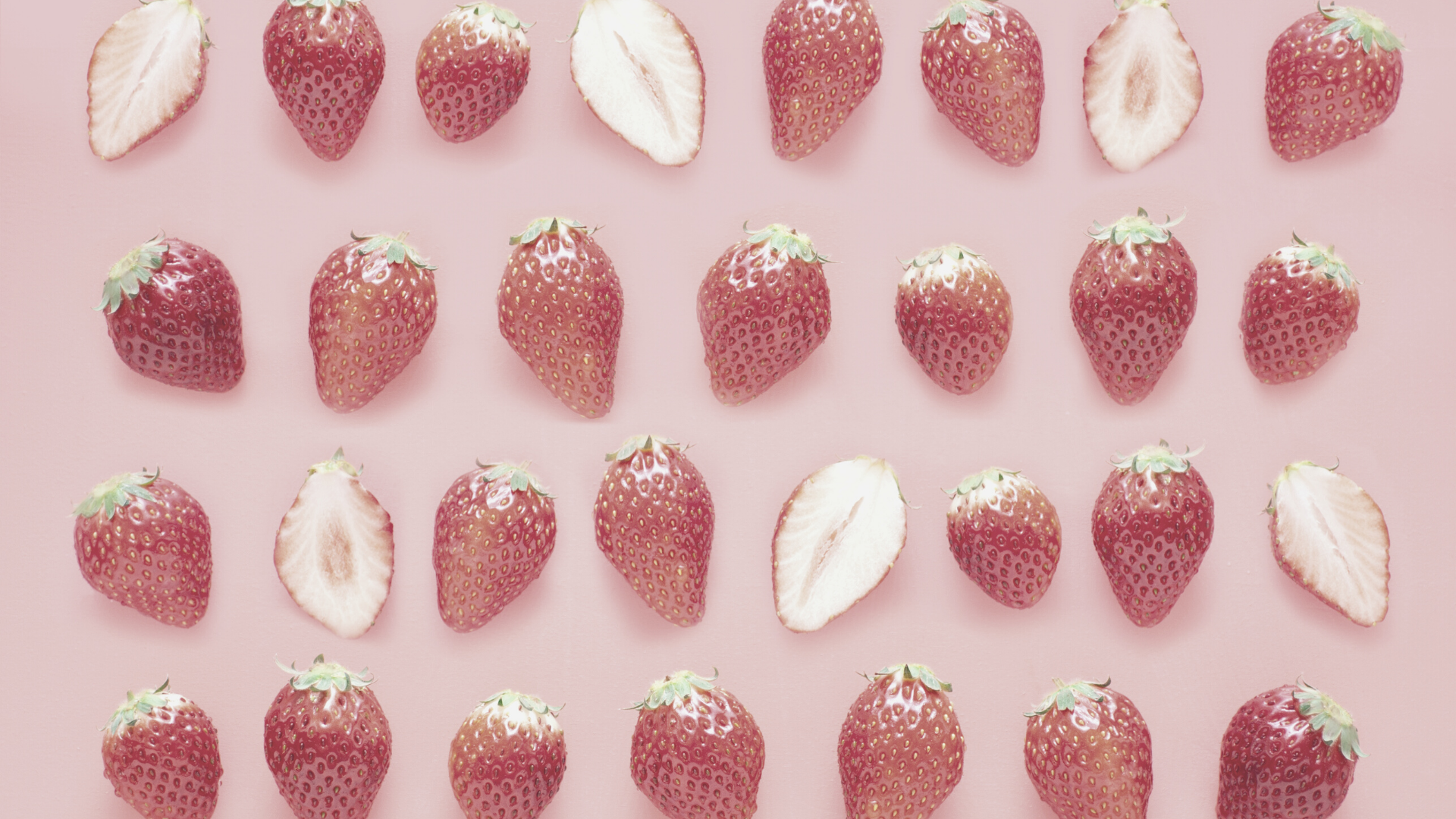This is the last post of the Halloween edition of scary food additives to avoid; 5 more scary food additives to avoid.
[Tweet “5 More Scary Food Additives to Avoid” via @sarahkayhoffman]
5 More Scary Food Additives to Avoid
Click HERE to save this post for later.
 Artificial Food Colorings
Artificial Food Colorings
Artificial Food Colorings include the likes of Blue 2, Green 3, Orange B, Red 3, Red 40, Yellow 5, Yellow 6, etc. An addition to food or drink, they are any dye, pigment or substance that imparts color to the item.
Find it in: candy, sausage, baked goods, soda pop, gelatin desserts and many other beverages in general
Of interest: Food coloring correlations in everything from ADHD to tumors, cancer, gastric discomfort and more.
Caramel Coloring
Caramel Coloring is made from caramelized sugar, usually with ammonium compounds, acids, or alkalis.
Find it in: Colas, baked goods, pre-cooked meats, soy and Worcestershire sauces, chocolate-flavored products, beer

Of interest: Caramel is produced from commercially available nutritive sweeteners consisting of fructose, dextrose (glucose), invert sugar, sucrose, malt syrup, molasses, starch hydrolysates and fractions thereof.
The acids that may be used are sulfuric, sulfurous, phosphoric, acetic, and citric acids; the alkalies are ammonium, sodium, potassium, and calcium hydroxides; and the salts are ammonium, sodium, and potassium carbonate, bicarbonate, phosphate (including mono- and dibasic), sulfate, and bisulfite.[2]
Its color ranges from pale-yellow to amber to dark-brown. {Also make note: Caramel Color may or may not contain gluten. It’s one of the very tricky ingredients you need to be extra-cautious of.}
Acesulfame Potassium
Acesulfame potassium (ay-see-SUHL-faym) is a calorie-free sugar substitute (artificial sweetener). You’ll see it also written as Acesulfame K or Ace K (K being the symbol for potassium). You’ll see it under the trade names Sunett and Sweet One.
Find it in: baked goods, chewing gum, gelatin desserts, diet soda
Of interest: Acesulfame potassium is 200 times sweeter than sugar. There has been an association with cancer and thyroid problems and this additive as well.
Annatto
Annatto’s seeds are sourced to produce a carotenoid-based yellow to orange food coloring and flavor.
Find it in: butter, cheese and other non-dairy foods such as rice, custard powder, baked goods, seasonings, processed potatoes, snack foods, breakfast cereals and smoked fish
Of interest: Annatto causes hives in some people. In fact, allergic reactions to annatto appear to be more common than reactions to commonly used synthetic food dyes.
Benzoic Acid
Benzoic Acid is a colorless crystalline solid and a simple aromatic carboxylic acid. Food preservatives come from its salts. Benzoic acid is an important precursor for the synthesis of many other organic substances.
Find it in: fruit juice, carbonated drinks, pickles
Of interest: Benzoic Acid (also called Sodium Benzoate) can cause hives, asthma, or other allergic reactions in sensitive individuals. Another problem occurs with sodium benzoate in beverages that also contain ascorbic acid (vitamin C). The two substances, in an acidic solution, can react together to form small amounts of benzene. Benzene is a chemical that can cause leukemia and other cancers.
Carrageenans: Debatable
Carrageenans are a family of linear sulfated polysaccharides that are extracted from red seaweeds. They are a thickening, gelling and stabilizing agent.
Find it in: ice cream, jelly, chocolate milk, infant formula, cottage cheese
Of interest: Carrageenans are very debatable. If you have irritable bowel syndrome or inflammatory bowel disease, though, I would strongly recommend avoiding them. The reason is two-fold:
- Carrageenan is an indigestible family of large molecules obtained from seaweed. Large amounts of carrageenan have harmed test animals’ colons. Note: the seaweed family is hard for many people with digestive disorders in general.
- Carrageenan has been shown to exacerbate intestinal inflammation in several studies. People with gut problems like IBS and IBD may want to avoid this product.

And there you have it.
What are your thoughts?
Food additives: scary or no concern?
If you liked this post, you might also enjoy:
Xox,
SKH

🤰 bloating be gone! weight loss through optimal gut health for women
💃ʜᴇᴀʟ ʏᴏᴜʀ ɢᴜᴛ. ʜᴇᴀʟ ʏᴏᴜʀ ʟɪfe.
🫶🏻 founder gutbyome.com

 Artificial Food Colorings
Artificial Food Colorings





OMG!
Thats downright scary! 🙁
Reading this makes me feel that everything I have eaten- right from my infancy (beginning with infant foods) to the foods I love to eat NOW (ice creams, jellies, pickles, cold drinks) are laden with chemicals which are BAD for me.
The problem is, what all CAN we stop eating?
I mean, if we were actually to AVOID all these additives, we would almost have to opt for a paleo or a completely vegan diet! 🙁
Highly informative though.
Thanks, Ambika! There are still plenty of things to eat. I avoid many of these MOST of the time. I am as far from Vegan as possible, too. With education and commitment, it’s possible. Thanks for stopping by!
I go over some of this on my website. check it out : http://www.fishoilfacts.net/best-fish-oil-brand
cod liver oil benefits